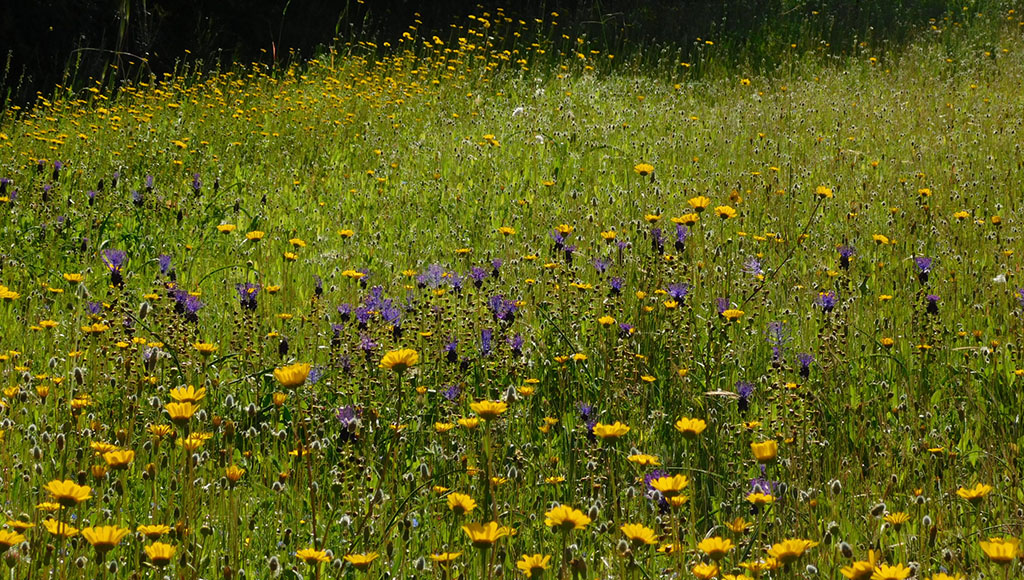Conservation should start at home, but does that mean your home?
The recent improved levels of winter rainfall have produced an amazing response from the plants and trees but also the wildflower meadows around us here in the southwest of Europe.
Although some reservoirs are still less than half full and we are facing water restrictions, the more natural-style garden will not suffer. Indeed, welcoming nature into your garden will save you money and effort because of minimum intervention but will produce more interest and diversity.

Some of those who have decided to buy homes in the Barrocal countryside have taken the opportunity to increase their gardens by buying neighbouring plots. This is a very practical way to safeguard privacy, but also gives opportunities for practicing conservation at home. Even if you have a smaller garden, the principles still apply.
The poor soils, sometime made thinner by erosion on slopes, provide ideal habitats for spectacular spring displays of annual wildflowers and, if you are lucky, will include amazing varieties of ground orchids. In common with many other mediterranean plants, they thrive in low fertility soils.
A big advantage is the lack of competition from grasses and more aggressive colonisers, such as the yellow Bermuda buttercup (Oxalis pes-caprae). These special habitats will not survive deep ploughing, brutal and inappropriate cleaning for fire prevention or intensive agriculture.
Fertilising and attempting soil improvements will be equally effective in denying us the special pleasure of this natural seasonal spectacle.
Many wildflowers happily co-habit with traditional agriculture such as that found in the Dry Orchards (Pomar de Sequeiro) of the Barrocal region.
A new book has recently been launched which highlights the culture and traditions used in the historical management of these areas, away from the coast, but essential in maintaining the landscape.

Not everyone can afford the luxury of leaving land economically inactive, but when all the areas used and managed as ‘gardens’ are added together, it is an important and significant contribution to the natural landscape. In this way, you can provide a haven for insects and wildlife and for a special range of native flowers.
Biodiversity is now a commonly used concept and if you wish to see it in your own garden, use a gentler approach to encourage the spring displays. Leave the plants until they have set and scattered their seed; a mid-to-late summer cut of meadows once each year will build up a latent seed bank in the soil.

The seeds and plants will wait for the right conditions and reward you with their response. Leaving the roots in the ground will also help to consolidate the fragile and thin soil.
Recent visits to proud owners of Barrocal land and gardens have provided lessons in patience and respect. Patience with the ability of the vegetation to heal itself and respect for the native flora to provide colourful displays of spring flowers.
Sometimes the temptation to clean and clear newly-acquired gardens and land can be hard to resist, but resist you must! Take your time to observe what the land can give you, respect the seasonal differences inherent in the mediterranean climate and, above all, keep calm – there are plants for every situation, even here in the Algarve.
Useful links:
www.flora-on.pt – Native plant info now searchable by location/in flower today
https://www.ccdr-alg.pt/site/sites/default/files/publicacoes/Livro_Pomar_de_sequeiro_digital.pdf – Digital version of the new book on traditional dry orchards of the Algarve
https://www.mgaportugal.org/BooksGB.html – books in English on the wild orchids of the Algarve and wildflower guides
By Rosie Peddle
|| features@algarveresident.com
289 791 869 | mgapsec@gmail.com
facebook.com/MedGardenersPortugal
www.mgaportugal.org




















